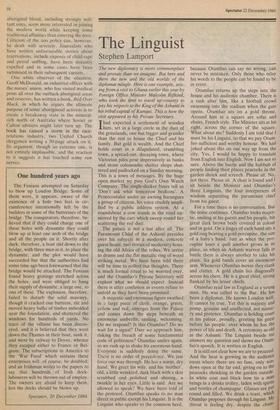One hundred years ago
The Fenians attempted on Saturday to blow up London Bridge. Some of them were, it appears, aware of the existence of a hole two feet in cir- cumference intentionally left by the builders in some of the buttresses of the bridge. The conspirators, therefore, be- lieved that if they could charge one of these holes with dynamite they could blow up at least one arch of the bridge and all the people on it. Shortly after dark, therefore, a boat slid down to the bridge, with three men in it, to place the dynamite; and the plot would have succeeded but that the authorities had some time ago been forewarned that the bridge would be attacked. The Fenians found heavy gratings stretched across the holes, and were obliged to hang their supply of dynamite, a large one, to one of these. The explosion, therefore, failed to disturb the solid masonry, though it cracked one buttress, slit and moved heavy balks of timber imbedded near the foundation, and shattered the windows for hundreds of yards. No trace of the villains has been discov- ered, and it is believed that they went down the Thames in their boat, sunk it, and went by railway to Dover, whence they escaped either to France or Bel- gium. The subscriptions in America to the 'War Fund' which sustains these enterprises will, of course, be doubled; and an Irishman writes to the papers to say that hundreds of Irish dock- labourers will he thrown out of employ. The owners are afraid to keep them, lest the docks should be blown up.
Spectator, 20 December 1884.






































































 Previous page
Previous page